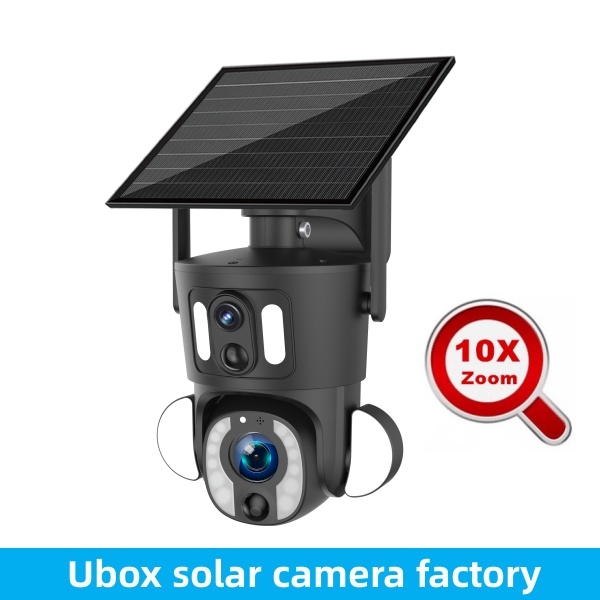Security Camera Resolution and Pixels: Reality vs. Exaggeration
A friend asked me, what is the length and width resolution of 2K? Instantly, I thought of two resolutions. Out of rigorous considerations, I made multiple confirmations and found that everyone indeed has very different understandings of 2K, and even 2K is a bit like a clown who can be manipulated by others. The core behind this is that 2K does not have a standard suitable for cameras.
Regarding resolution and pixels, I believe this is also a question that many friends have, so I took this opportunity to sort out the resolution and pixels of security cameras. But before talking about resolution, we have to start with the format.
1. Standard
In the days of analog television, there were two formats. One is P system (PAL) and the other is N system (NTSC). Security cameras started with analog cameras (CCTV, also known as closed circuit television), which followed this set of television standards.
*P frame rate is 25 frames per second, suitable for 50Hz power frequency, visible scanning line 576, used in Europe, most of Asia, Australia, some African and South American countries.
*N frame rate is 29.97 frames per second (30 frames), suitable for 60Hz power frequency, visible scan line 480 lines, for use in the United States, Canada, Japan and some other regions.
The line here is equivalent to the vertical resolution, so the vertical resolution is 576 in the P system and 480 in the N system. Interestingly, even in the IPC era, different formats and the same standard still have different definitions of resolution under the P system and N system. Of course, this is something for later, and will be introduced below.
2. Common resolutions
* CIF (Common Intermediate Format): 352×288.
* 2CIF, or Half D1, refers to CIF with doubled horizontal resolution, usually 704×288 pixels.
* 4CIF, or Full D1, refers to four times the CIF resolution, doubling both the horizontal and vertical resolutions, reaching 704×576 pixels (P system) or 704×480 pixels (N system).
D1 (Digital One): 720×576 pixels (P system) / 720×480 pixels (N system)
*VGA (Video Graphics Array): 640×480 pixels, also called 480P, this is what we often call 30W pixels, 640×480 = 307200 pixels.
* QVGA (Quarter Video Graphics Array): 320×240 pixels, which is a quarter of the resolution of VGA.
* SVGA (Super Video Graphics Array): 800×600 pixels, a higher resolution than VGA.
* HD (High Definition): 1280×720 pixels, also called 720P, standard high definition resolution. This is what we often call 100W pixels, although it is less than 100W, 1280×720 = 921600 pixels.
* 960P: 1280×960, this is what we often call 130W pixels, although it is less than 130W, 1280×960 = 1228800 pixels.
* Full HD (FHD): 1920×1080 pixels, also called 1080P, full HD resolution, this is what we often call 200W pixels, 1920×1080 = 2073600 pixels.
* 2K: 2048×1080 pixels.
4K/UHD (Ultra High Definition): 3840×2160 pixels, this is what we often call 800W pixels, 3840×2160 = 8294400 pixels.
8K/UHD-2 (Ultra High Definition-2): 7680×4320 pixels, this is what we often call 3200W pixels, 7680×4320 = 33177600 pixels.
The above are all common resolutions, mostly 4:3 and 16:9. With the popularity of widescreen 16:9, in the field of cameras, we see more resolutions such as 720P, 1080P, and 4K.
The 2K standard does not comply with 4:3 or 16:9, so it cannot be applied to IPC. So it has room for operation. In principle, as long as the length and width are larger than the standard definition, it is 2K, or even 2.X.
3. Common resolutions of security cameras
Since 16:9 is more common in security cameras, only 16:9 related resolutions are listed below.
* 300W: 2304×1296, called 2K, or 2.2K.
* 400W: 2560×1440, called 2K, or 2.5K.
* 500W: 2880×1620, known as 2K, or 2.8K, or even 3K.
* The second definition of 500W: 3072×1728, called 3K.
I put the specific conversion method of several K at the end of the easter egg.
last words
Careful friends may have discovered that the actual resolutions of 100W (720P), 130W (960P), 400W, and the first 500W resolution definition are far different from the required pixels. For example, 720P actually only has 92W pixels. Others can be By your own calculation, this is the number one exaggeration about security cameras. The second biggest exaggeration is that because there are no public standards for 2K and 3K, it has become a clown at the mercy of others. It is more of a marketing rhetoric.
As follows:
According to the definition logic of 2CIF, the length of 2CIF is twice that of 1CIF. Then follow this calculation logic:
1. 300W, 2304×1296 length / 2K (2048×1080) length = 2304/2048 = 1.125 times, that is, 2.25K, 2.2K can be advertised.
2. Similarly to 400W, 2560 / 2048 = 1.25, which is 2.5K.
3. In the same way as 500W, 2880 / 2048 = 1.4, which is 2.8K, then rounding up, you can even advertise 3K; 3072 / 2048 = 1.5, which is 3K.
2024 Newest 10X Solar PTZ Camera On Launch!
If you have different opinions and suggestions on our articles, welcome to contact us for further discussion together!
Our email: [email protected]
Written by Ruibosi Electronic Co., LTD
Ruibosi Electronic Co., LTD is a professional manufacturer of 4g wifi Ubox app solar security cameras, tuya smart app 4g wifi solar security cameras, etc.
We are now officially opening global investment channels, and sincerely invite you to join us and become our agent or wholesale partner. We can provide competitive prices, and simultaneously provide you with a full set of product pictures, parameters, videos, product software, and hardware knowledge training, market Marketing training, and other materials to help you learn products as soon as possible, understand products, open up the market, better serve customers and win the market as soon as possible.

